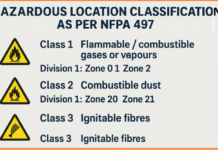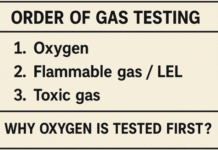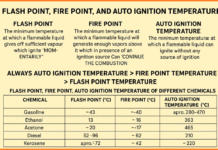Grit blasting, also known as abrasive blasting, is a widely used industrial process for cleaning, finishing, and preparing surfaces for various applications. While grit blasting is effective, it comes with inherent risks that must be addressed to ensure the safety of workers and the environment. This article explores the key aspects of grit blasting safety, providing insights into the potential hazards and the measures that can be implemented to mitigate them.
Grit Blasting
Grit blasting involves propelling abrasive materials, such as sand, steel shot, or glass beads, at high velocity onto a surface to remove contaminants, corrosion, or unwanted coatings. The process is utilized in industries such as manufacturing, construction, and shipbuilding for tasks ranging from surface preparation to the removal of rust and old paint.
Hazards in Grit Blasting
- Respiratory Hazards: One of the primary concerns in grit blasting is the generation of airborne particles, which can pose significant respiratory risks to workers. Inhaling these particles, especially if they contain toxic substances or heavy metals, can lead to respiratory illnesses and long-term health issues.
- Hearing Damage: The high noise levels produced during grit blasting operations can result in hearing damage or loss if proper precautions are not taken. Prolonged exposure to loud noise without adequate hearing protection can have serious consequences for workers.
- Eye Injuries: Grit blasting generates particles that can be propelled at high speeds, posing a risk of eye injuries to workers. Without proper eye protection, workers may be susceptible to abrasions, cuts, or even more severe injuries.
- Skin Hazards: Direct contact with abrasive materials can lead to skin abrasions and irritation. Some abrasive substances may also contain harmful chemicals, exacerbating the potential for skin-related health issues.
Safety Measures for Grit Blasting
- Personal Protective Equipment (PPE): The use of appropriate PPE is crucial to safeguard workers during grit blasting operations. This includes respiratory protection such as dust masks or respirators, eye protection with safety goggles or face shields, hearing protection (earplugs or earmuffs), and protective clothing to prevent skin exposure.
- Enclosure and Ventilation: Containing the grit blasting operation within an enclosure helps minimize the dispersion of abrasive particles into the surrounding environment. Additionally, implementing effective ventilation systems ensures that airborne contaminants are properly captured and removed, reducing the risk of respiratory hazards.
- Equipment Inspection and Maintenance: Regular inspection and maintenance of grit blasting equipment are essential to ensure its proper functioning and to identify any potential safety issues. Malfunctions or worn-out parts can increase the likelihood of accidents, so routine checks should be conducted.
- Training and Education: Proper training for workers involved in grit blasting is critical to enhance their awareness of potential hazards and the correct usage of safety measures. This includes training on the proper handling of equipment, the use of PPE, and emergency response procedures.
- Environmental Considerations: Grit blasting can generate a significant amount of waste, including used abrasive materials and removed contaminants. Proper disposal methods must be followed to prevent environmental contamination. Employing eco-friendly abrasives and recycling whenever possible can also contribute to minimizing the environmental impact.
- Monitoring and Control: Implementing real-time monitoring systems for airborne particulate matter and noise levels helps in identifying potential risks and allows for immediate corrective actions. Controlling the parameters of the grit blasting process, such as pressure and abrasive flow, is crucial to maintaining a safe working environment.
- Emergency Preparedness: Despite all precautions, accidents can still occur. Establishing emergency response plans, including first aid procedures and evacuation protocols, is essential to mitigate the impact of unforeseen incidents.
Grit blasting is industrial process that, when performed with safety in mind, can achieve efficient and effective results. Assessment the potential hazards associated with grit blasting and implementing safety control measures are paramount to protecting the well-being of workers and the environment. By prioritizing personal protective equipment, proper equipment maintenance, and ongoing training, industries can ensure that grit blasting operations are not only productive but also safe for everyone involved.





